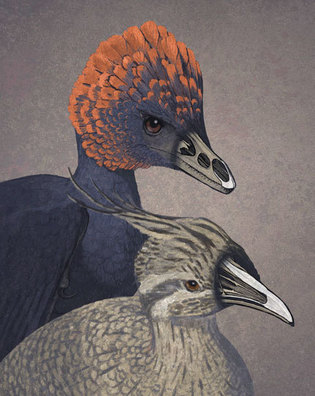 loading
loading
FindingsTime machineUsing genetics to reverse-engineer a dinosaur snout in chickens.  John ConwayView full image“I never set out to make a dinosaur,” says Bhart- Anjan Bhullar ’05, who officially joined Yale’s geology and geophysics faculty this summer. “Well, not in full.” Dinosaurs still roam among us, although they’re now called birds. When Bhullar was an undergrad, studying with Yale paleontologist Jacques Gauthier and evolutionary geneticist Gunter Wagner, he had the idea of driving skull evolution backwards. As a Harvard grad student, Bhullar worked with his mentor, Arhat Abzhanov, and colleagues to understand, and undo, a key step that helped turn a dinosaurian snout into an avian beak. (The illustration shows an extinct dinosaur, the Anchiornis, at top, with a modern bird, the tinamou.) Working with chicken embryos, Bhullar’s team blocked the action of two key proteins in two zones that are unique to birds. As documented in May’s online edition of Evolution, the embryos developed dinosaur-like snouts. (The eggs, however, never hatched.)
The comment period has expired.
|
|